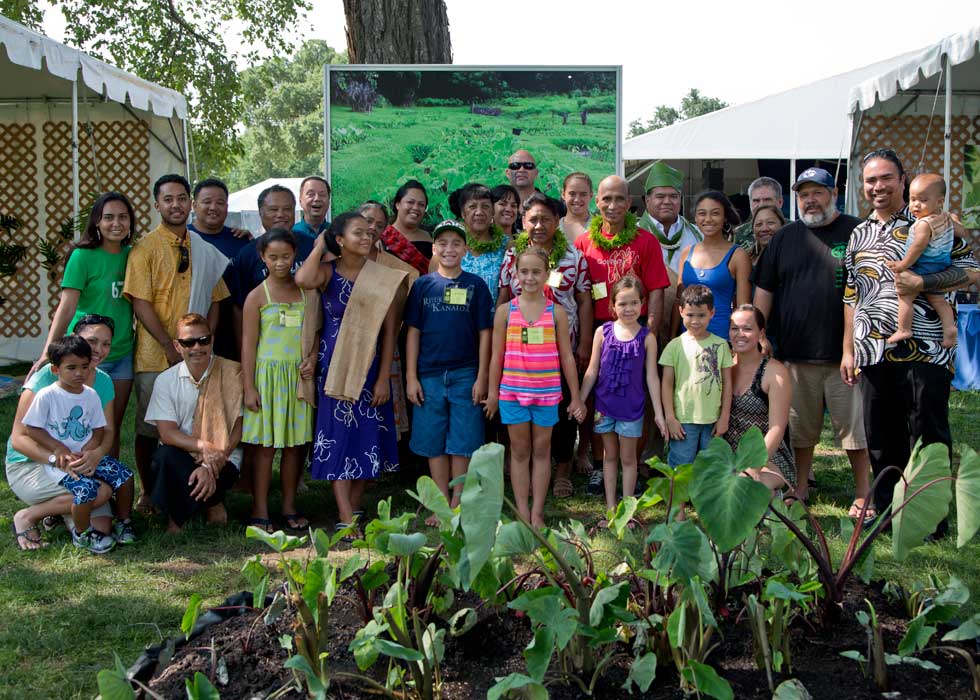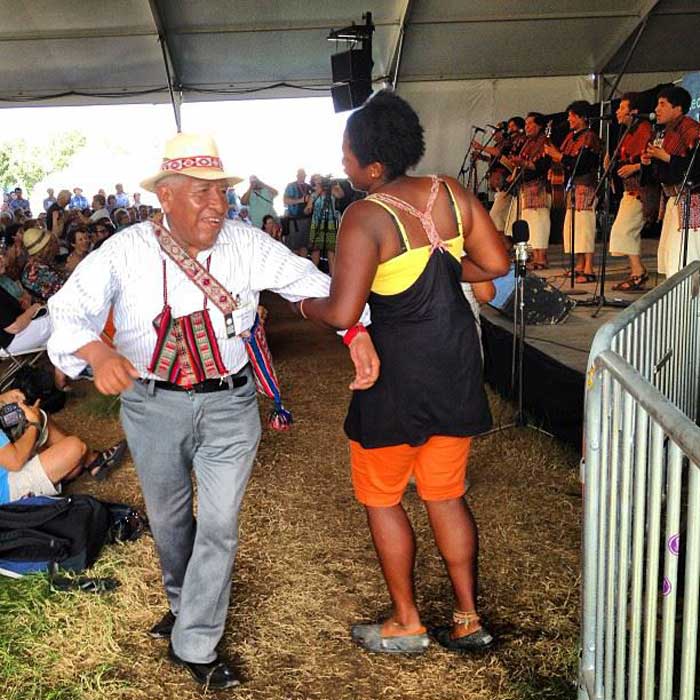Intangible Cultural Heritage Within Reach

Countless times throughout the Festival as I walked through the One World, Many Voices site, I couldn’t help but feel an overwhelming sense of how fortunate I was to have the opportunity to intern and work with such an amazing program.
For those two weeks on the National Mall, I was in one of the most diverse places in the world! As one participant pointed out, where else would you find Palenqueros from Colombia dancing to the music of Tuvan throat singers as Garifuna drummers added their beats on drums made from turtle shells!
During the Festival, I was assigned to one of the groups from Bolivia—Los Masis—a group of musicians and educators dedicated to elevating pride in the rich indigenous culture of Bolivia and the preservation of Quechua, one of Bolivia’s native languages, through the playing of traditional Andean music.
Since much of my work with the group involved Spanish/English interpretation, I had the pleasure of helping facilitate discussions between Los Masis and the public. The visitors and the musicians directly engaged one another in deep conversations ranging from musical education methods to native Bolivian instruments such as charangos and phututu, the intricate costumes worn when the Pujllay dance is performed, and so much more.
With each conversation, it became clear that Los Masis and the other Festival participants are fighting for the same goal: not only to preserve, but to truly revitalize, their languages and cultures in traditional and not-so-traditional ways!

The very first day the participants arrived on the Mall to prepare for the following day’s opening, I was reminded of the beauty and absolute pricelessness of intangible cultural heritage. While walking to the Hungary program’s Danubia stage where the welcome ceremony for participants was being held, I noticed a few Hawaiian delegates talking among themselves (in their native tongue of ‘O le lo Hawaiʽi, of course) and pointing to some weeds on the ground. As I continued to walk towards the big tent, a fellow intern who is Hawaiian told me that the participants were pointing out that the aforementioned “weeds” can actually be used as medicine to treat boils on the skin. How neat is that?
Less than an hour later, I was leading the Kallawaya delegation—a group of medicinal practitioners from Bolivia—to their tent when I again noticed a few participants pointing at the ground and smiling. One of the ladies proudly proclaimed in Spanish that they cultivate this type of plant for medicine.
At that point, tears started to form in my eyes as I realized how two very different groups, from very different parts of the world, even with very different languages, both recognize this same plant as a form of medicine that is useful to them, and that common knowledge and recognition is something that connects those two distinct cultures.

Admittedly, I first felt guilty for having thought of these plants as just weeds and nothing more, but that feeling of guilt soon transitioned into a feeling of realization: this is it—intangible cultural heritage at its core! Intangible cultural heritage is the parts of culture that are not tangible—our memories that can be shared through storytelling, our songs, dances, recipes, and other knowledge that is passed down through generations.
While the Festival was filled with various physical objects from Hungarian Heritage, Will to Adorn, and the countless communities represented in the One World, Many Voices program, the amount of storytelling, dance, music, craftsmanship, and other demonstrations of intangible cultural heritage expresses exactly what the Smithsonian Folklife Festival is all about: the celebration of cultural heritage—intangible and tangible—and the celebration of those people who sing the songs, speak these languages, and make up these cultures.
Arlean Dawes was an intangible cultural heritage policy intern at the Smithsonian Center for Folklife and Cultural Heritage and gave her time and skills to work with the One World, Many Voices program at the 2013 Smithsonian Folklife Festival. She is an undergraduate student at Texas A&M University pursuing a double major in international studies and Spanish and a minor in Italian. She is interested in multilingual, intercultural, and literacy education as a means of language and culture preservation.

